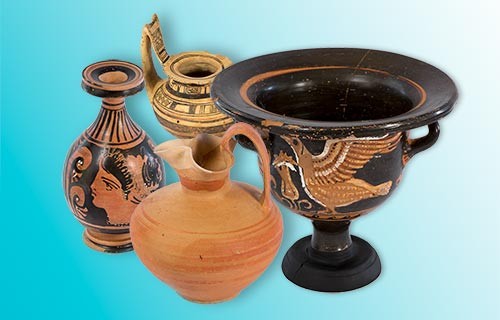Subgeometric peucetian Kantharos
| Measures | h 9,5; ø foot 4,8; ø edge 9,2 |
| Place and chronology | Salentino - found outside the tomb 19. 6th century BC |
The indigenous civilizations of Apulia in pre-Roman age created a type of pottery called geometric or subgeometric due to its type of decoration. The decorative repertoire has straight and curvilinear geometric patterns, in some cases alternating with animal and anthropomorphic motifs. Depending on the production area, geometric pottery is classified in Daunian, Peucetian and Messapian. In central Apulia, Peucetian subgeometric pottery has been found in many centres, besides Salentino, also in Ceglie del Campo (Bari), Adelfia, Noicattaro, Rutigliano, Turi, Gioia del Colle, Gravina in Puglia and Altamura.
Peucetian pottery, in the most ancient phase, is decorated in dark brown with geometric patterns (including the swastika and the "comb") arranged in squares to form a continuous band of motifs that winds around the vase surface; subsequently, the two-tone appears with the colour red that is added to the blackish-brown one; added to the geometric motifs are zoomorphic elements (like the birds on the pottery of Gioia del Colle) and vegetables (rosettes and olive and laurel branches).

